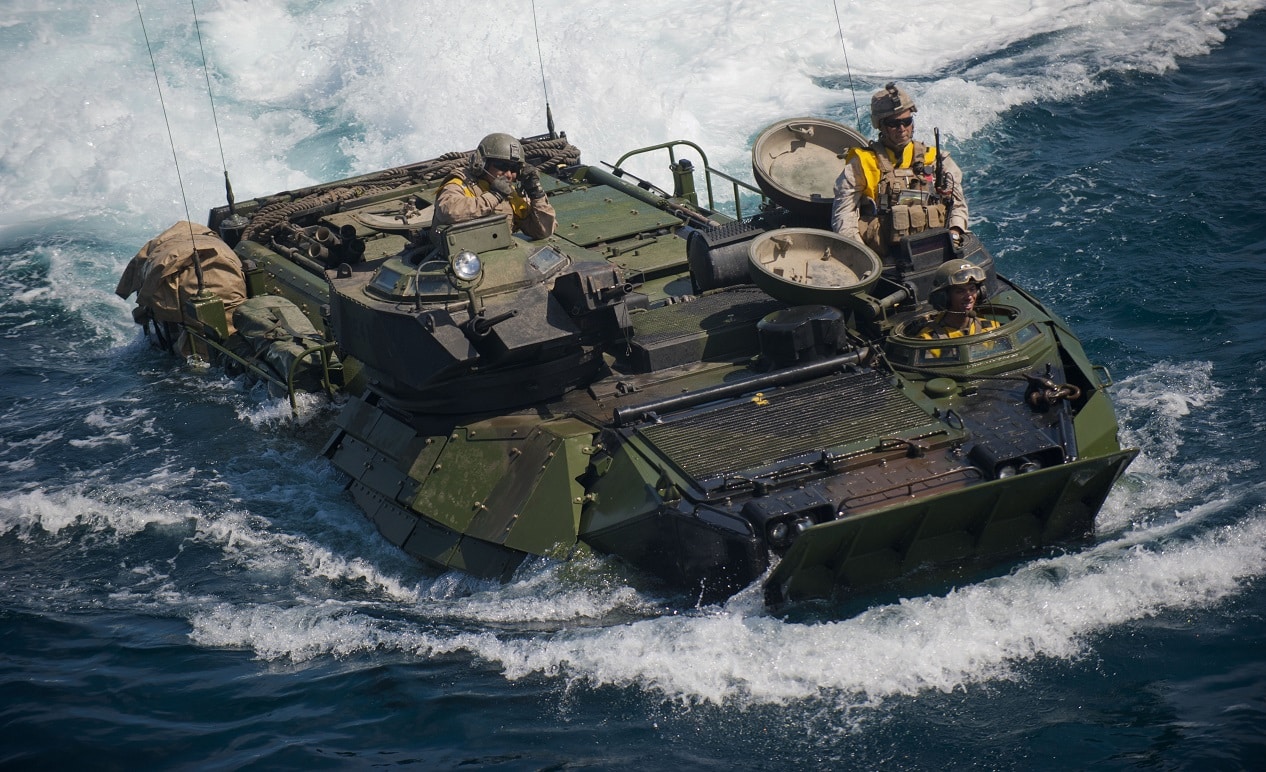What Happened to the Marine’s Amphibious Assault Vehicles? The US Marine Corps is pulling its amphibious assault vehicles from regular deployments and out of the water except in emergencies after a deadly accident last year, the service said in a statement.
Commandant of the Marine Corps Gen. David Berger has decided that AAVs “will no longer serve as part of regularly scheduled deployments or train in the water during military exercises,” that statement said.
“AAVs will only return to operating in the water if needed for crisis response,” the Corps said, noting that the vehicles will still be permitted to operate on land.
The Marine Corps insisted that “the AAV is a safe and effective vehicle for amphibious operations” and that the decision “was made in the interest of the long-term health of the amphibious vehicle programs and future capabilities.”
Amphibious Assault Vehicles: Why Pull Them Now?
The decision comes about a year and a half after an AAV assigned to Bravo Company, Battalion Landing Team 1st Battalion, 4th Marines, part of the 15th Marine Expeditionary Unit sank off the coast of California during training, killing eight Marines and a Navy corpsman. It was the deadliest accident in the history of the AAV program.
One of multiple investigations into the accident concluded that the tragedy was “preventable” and was caused by “a confluence of human and mechanical failures.” Specifically, the vehicle was improperly maintained, training was inadequate, and critical safety procedures were not followed.
In the aftermath, the Corps relieved multiple officers, including a two-star general.
Though the Marine Corps suspended waterborne operations for AAVs almost immediately after the accident, the service decided in April to put them back in the water, provided that units met certain safety requirements.
Pulling AAVs from regular deployments and waterborne operations permanently, with their use only being allowed in case of a crisis, is a major reversal.
The Corps is in the process of replacing its aging fleet of AAVs with the newer amphibious combat vehicles, which the service began receiving last fall.
In September, the Marines announced that the service had “suspended waterborne operations of the Amphibious Combat Vehicle after identifying an issue with the towing mechanism,” explaining that the decision was made “out of an abundance of caution.”
A spokesman for the Marine Corps told Marine Corps Times that the ACV is currently still unable to conduct waterborne operations, meaning that the service does not have any amphibious vehicles that are permitted to carry out waterborne operations under normal circumstances.
Ryan Pickrell is a senior military and defense reporter at Business Insider, where he covers defense-related issues from Washington, DC.

